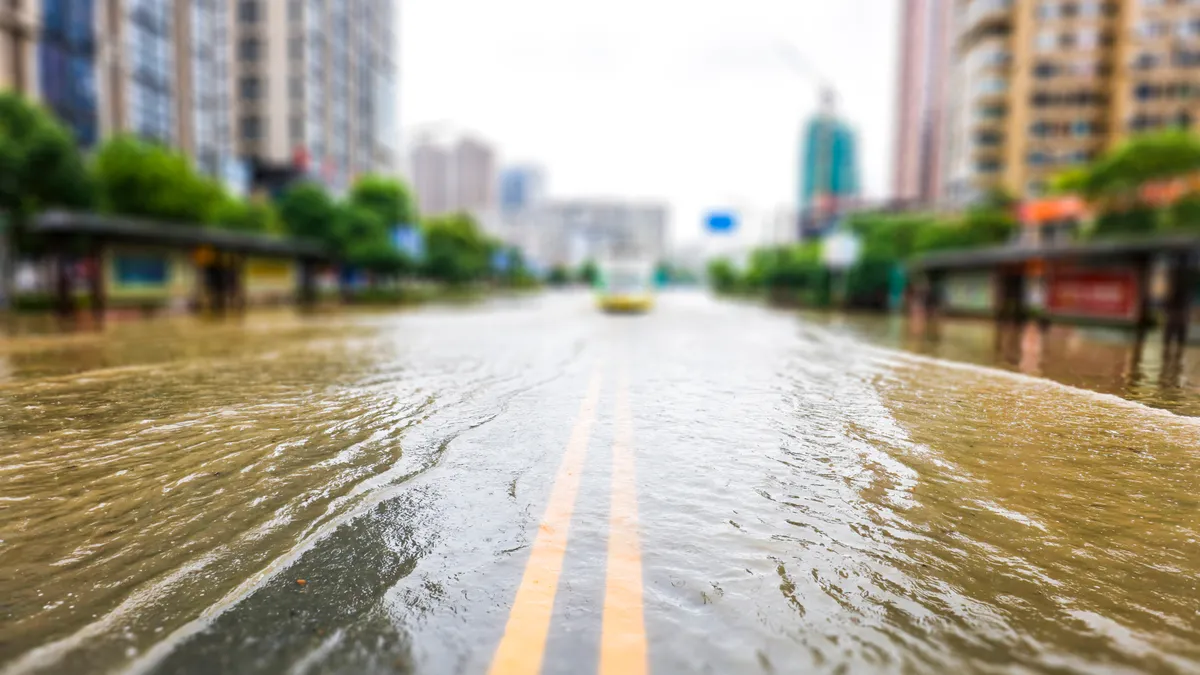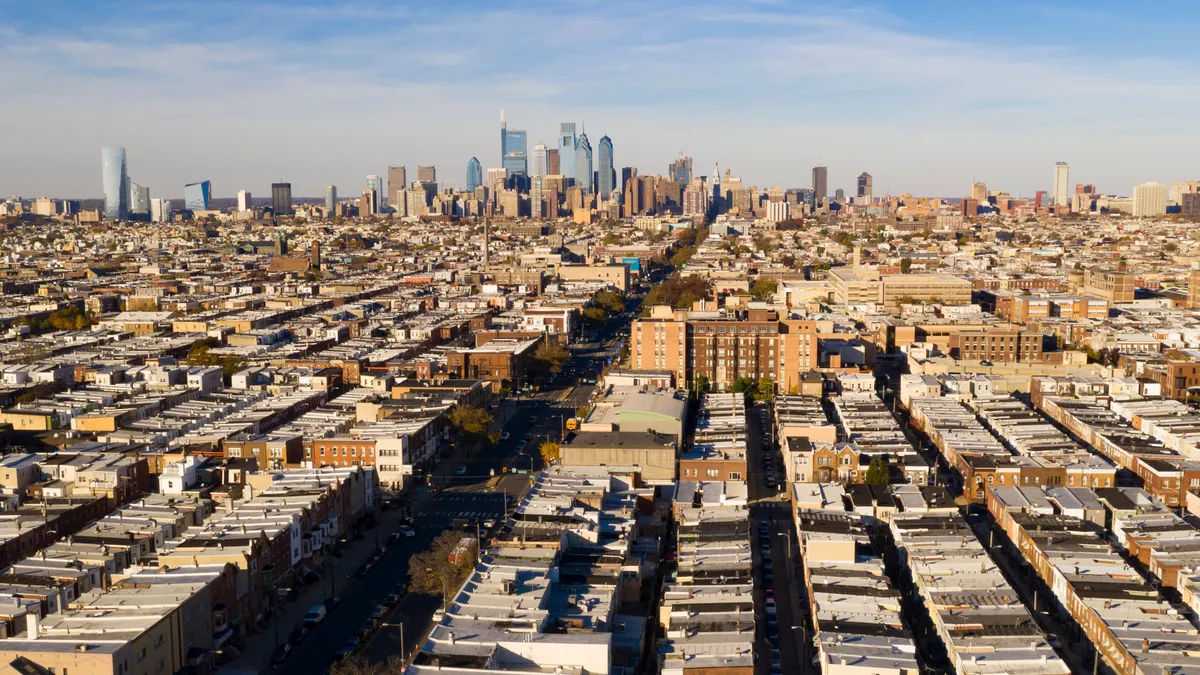Dive Brief:
- Costs tied to disruptive and destructive flooding and drought are set to balloon between now and 2050 for cities around the world, according to a report released Wednesday by C40 Cities, a network of 97 major world cities and their mayors that collaborate on climate action.
- Urban damages caused by river flooding could cost the C40 cities — which in the U.S. include Miami, San Francisco and Philadelphia — $64 billion annually, and $136 billion in GDP production each year over the next three decades, the group’s researchers found. Flooding also puts more than 300 power stations in the C40 cities at risk, over half of which are in the U.S.
- More frequent and severe droughts are also expected to increase water losses by 26%, resulting in $111 billion in damages annually over the next three decades, the report found.
Dive Insight:
Cities have been inundated with projections of how the climate crisis will impact weather, infrastructure and other aspects of daily life now and in the future, including from the United Nations’ Intergovernmental Panel on Climate Change this year. People in the U.S. are increasingly experiencing the impacts of extreme weather firsthand and drawing the connection between these events and climate change, according to newly released survey results from NPR, the Robert Wood Johnson Foundation and the Harvard T.H. Chan School of Public Health.
Over the past month alone, U.S. residents have experienced destructive flooding events, including in Florida, Maryland and Montana.
Neuni Farhad, who serves as project manager of adaptation research at C40 Cities and worked on the Water Safe Cities report, hopes it brings a much-needed sense of quantification to water issues specifically and makes tangible the costs of inaction.
“There's actual infrastructure and services that are being impacted ... things like hospitals and healthcare, but also energy systems and energy generation facilities,” Farhad said. “It's this kind of information — these actually tangible assets of what is going to be at risk and who is going to be at risk — that really motivates cities” and gives officials leverage to act.
C40’s cost calculations took into account existing infrastructure and solutions, which shows how much more cities need to invest on top of any steps they’ve already taken, Farhad explained. One of the main goals public- and private-sector leaders alike can support going forward is implementing nature-based solutions and upgrading infrastructure to make cities more permeable to water or help them hold water more effectively, she said.
A separate study, published this week in the journal npj Urban Sustainability from researchers associated with Columbia University, called for urban resilience and adaptation plans to better incorporate the risks of extreme rainfall and sudden-onset events. Gaps that cities should address include implementing early warning systems to effectively communicate with people who face the greatest flood risk, as well as using more advanced modeling to promote future development in areas less susceptible to harmful effects from rainfall.
The next phase of C40’s Water Safe Cities project will decide on targets and implementation pathways for tracking cities’ progress in mitigating these risks.
Correction: This article has been updated to correct the title of C40 Cities' Neuni Farhad.













